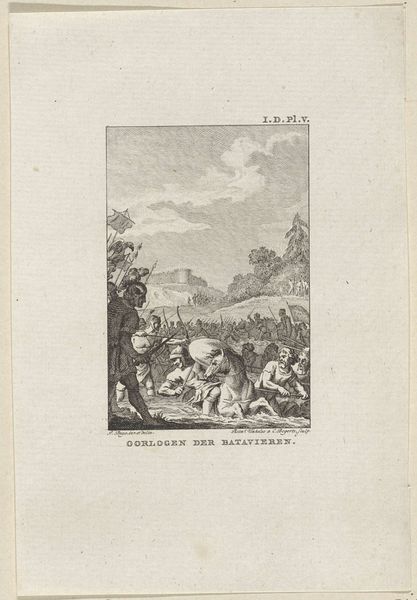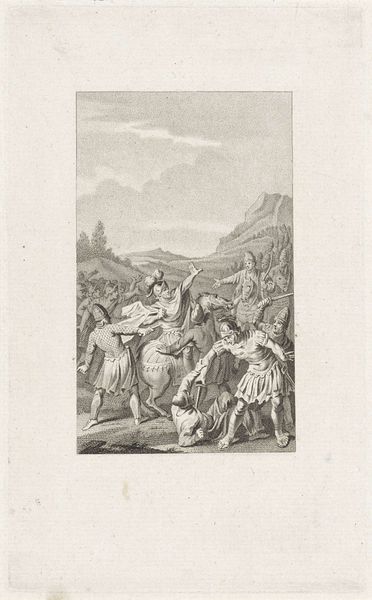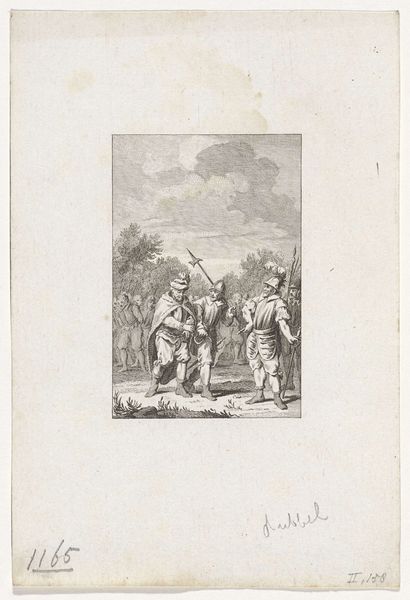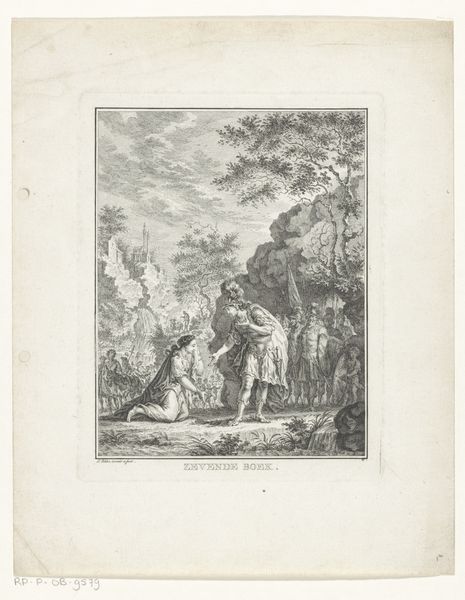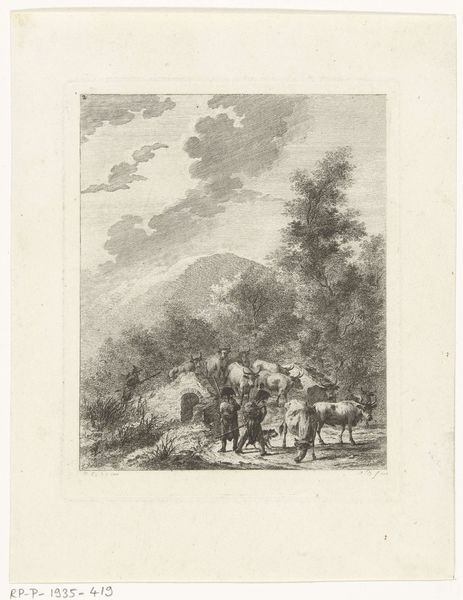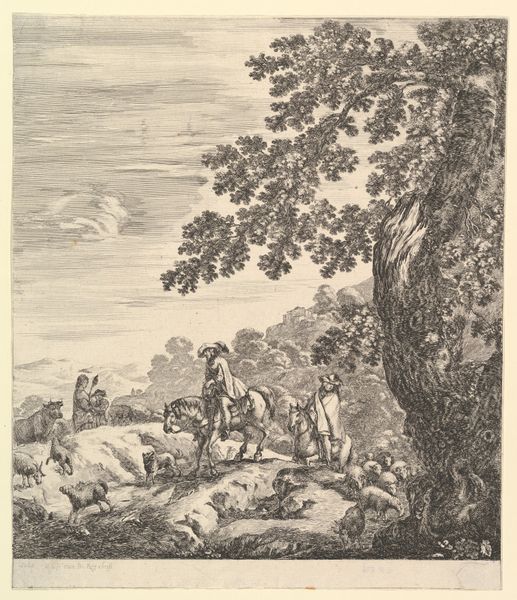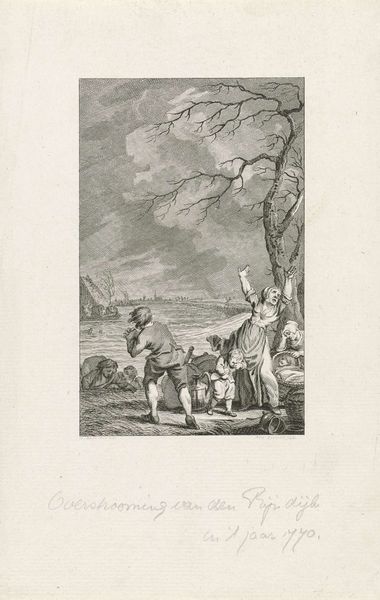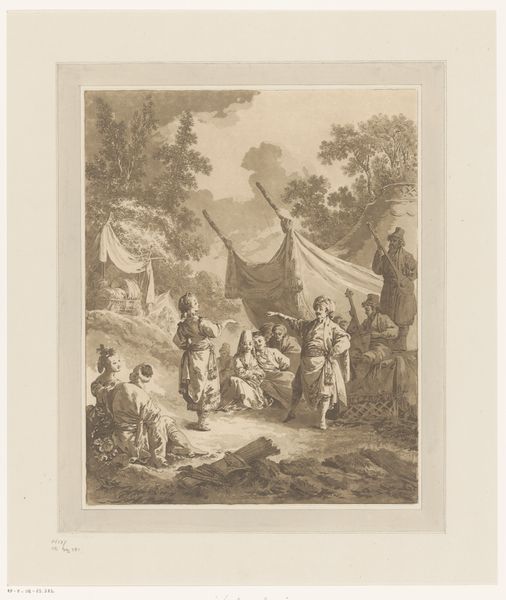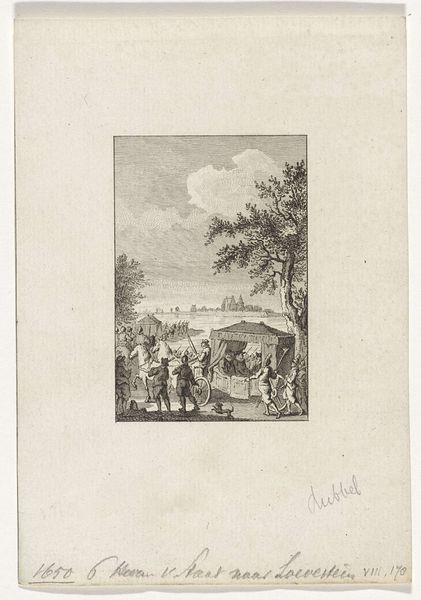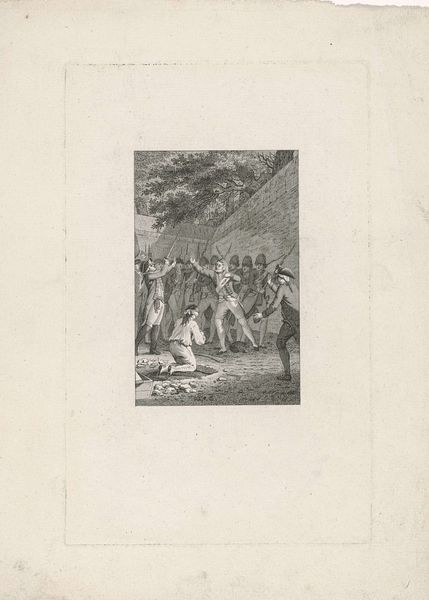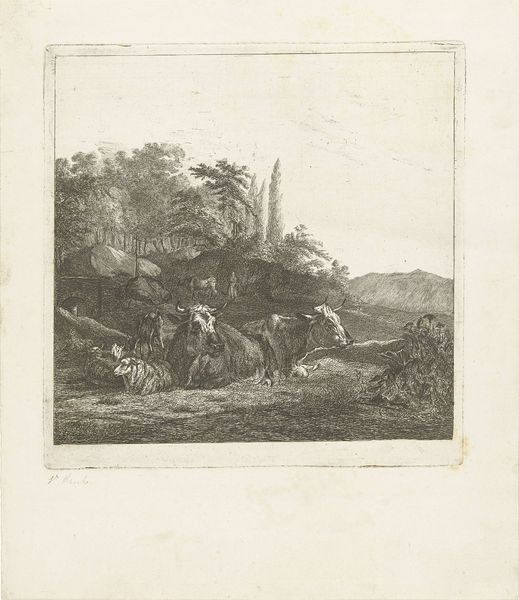
print, paper, engraving
#
portrait
#
neoclacissism
# print
#
landscape
#
paper
#
genre-painting
#
history-painting
#
engraving
Dimensions: height 167 mm, width 113 mm
Copyright: Rijks Museum: Open Domain
Editor: This print, "Aankomst van de Bataven in Nederland," or "Arrival of the Batavians in the Netherlands," created between 1725 and 1784 by Simon Fokke, depicts a scene that feels both historical and staged. There's a large group of figures arriving in a landscape. What do you see in this work? Curator: This engraving is more than just a historical scene; it's a statement about identity and nation-building. Consider the period in which it was made – the late 18th century. The narrative of the Batavians arriving becomes a foundational myth, an attempt to create a lineage, to ground Dutch identity in an ancient, heroic past. But who is included and excluded from that heroic past? What societal norms and prejudices were common at that time? Editor: That's interesting. It feels like it's trying to tell a story of a unified people arriving together. Curator: Exactly. But history, like art, is never neutral. The figures, idealized and semi-nude, conform to Neoclassical aesthetics, drawing parallels with the Romans. This act of visually aligning themselves with classical ideals was used to give an air of legitimacy to their perceived heritage. Consider also the role of landscape: is it an inviting home or a territory to be conquered? How does that influence our reading of the scene and who gets to claim ownership of that land? Editor: So you're saying it's using this historical moment to legitimize the dominant power structures of the time? Curator: Precisely! The print visualizes the constructed nature of national identity, reinforcing power dynamics, and implicitly excluding other narratives. Editor: I never thought of it that way. I see how this print is reflecting both history, national identity, and cultural ideology all at once! Curator: These types of depictions often show us less about the actual past and more about the values of the present, or in this case, the 18th century present.
Comments
No comments
Be the first to comment and join the conversation on the ultimate creative platform.
